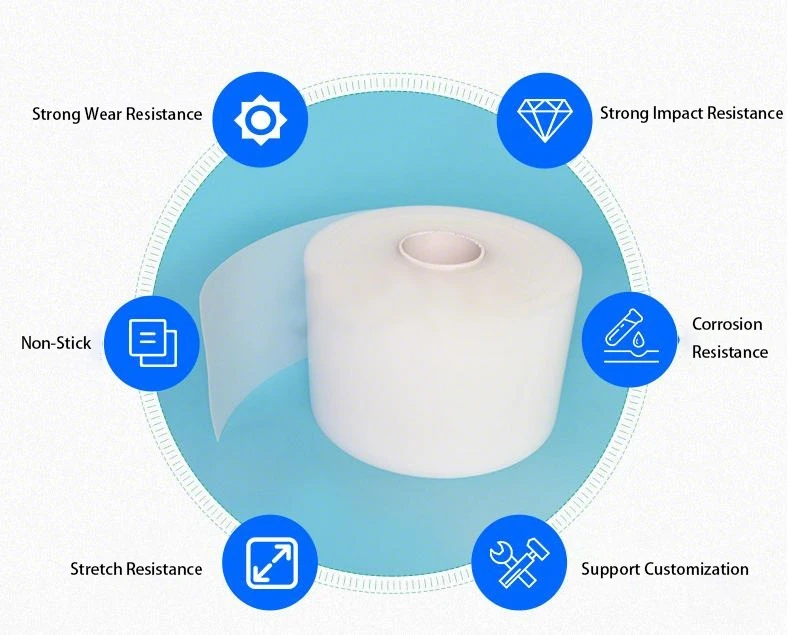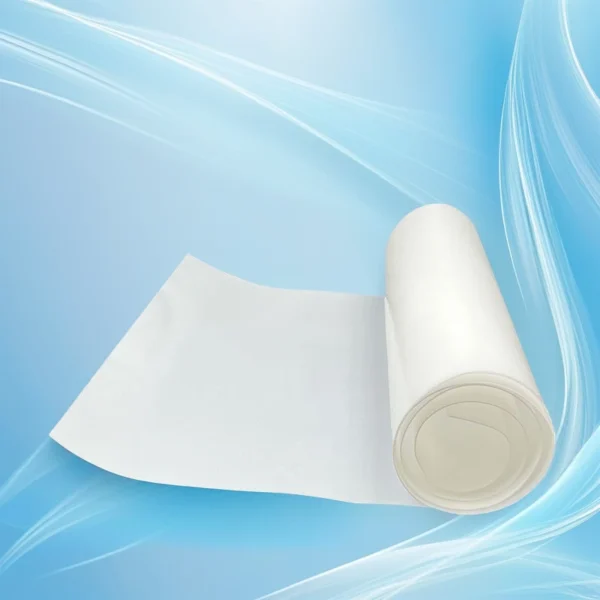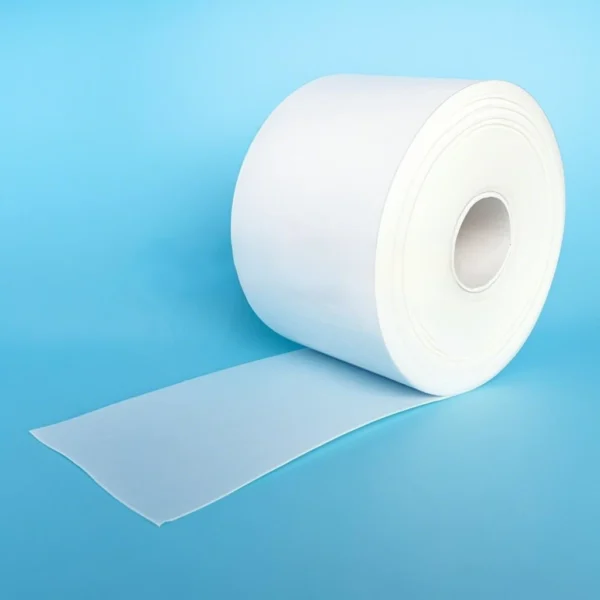When designing components for demanding applications, selecting the right material is crucial. Two polymers often considered for their excellent tribological properties are Polytetrafluoroethylene (PTFE) and Ultra-High Molecular Weight Polyethylene (UHMWPE). Both are known as wear-resistant polymers and low-friction materials, but their specific characteristics make them suitable for different applications. This article provides a comprehensive comparison of PTFE vs UHMWPE to help you make an informed decision.
Introduction: Why Wear Resistance Matters
Wear resistance is the ability of a material to resist surface damage caused by friction, abrasion, erosion, and other forms of mechanical wear. Choosing materials with high wear resistance is essential for extending the lifespan of components, reducing maintenance costs, and improving overall system performance. Polymers are often selected for applications where metals are unsuitable due to weight, corrosion concerns, or the need for self-lubricating properties.
Understanding PTFE (Polytetrafluoroethylene)
PTFE, commonly known as Teflon (a Chemours trademark), is a fluoropolymer consisting of carbon and fluorine atoms. Its unique molecular structure gives it exceptional properties:
- Extremely Low Coefficient of Friction: PTFE boasts one of the lowest coefficients of friction of any solid material.
- Excellent Chemical Resistance: Resistant to virtually all chemicals, making it suitable for harsh environments.
- High Temperature Resistance: Can withstand temperatures up to 260°C (500°F).
- Non-Stick Properties: Nothing sticks to PTFE, hence its use in cookware.
- Electrical Insulation: Excellent dielectric properties.
PTFE Grades and Modifications
PTFE is available in various grades, including:
- Virgin PTFE: Pure PTFE with the best properties.
- Filled PTFE: PTFE modified with fillers such as glass fiber, carbon, bronze, or graphite to improve wear resistance, creep resistance, and thermal conductivity.
Applications of PTFE
- Seals and Gaskets: Due to its chemical resistance and low friction.
- Bearings and Bushings: Where lubrication is difficult or impossible.
- Non-Stick Coatings: Cookware, industrial applications.
- Wire and Cable Insulation: Excellent electrical properties.
- Medical Implants: Biocompatible and chemically inert.
Chemical-Resistant Skived PTFE Film for Electronics & High-Frequency Cables
Skived PTFE Film provides stable dielectric performance in high-frequency and high-voltage electronics. With resistance to acids, alkalis, and solvents, it ensures reliability in circuit boards, cables, and semiconductor manufacturing.
Key Features: Non-aging, tensile strength exceeding steel wire, and compliance with SAE AMS3661D standards.
Understanding UHMWPE (Ultra-High Molecular Weight Polyethylene)
UHMWPE is a polyethylene with an extremely high molecular weight (typically 3 to 6 million g/mol). This high molecular weight gives it exceptional toughness and wear resistance:
- Exceptional Wear Resistance: Significantly better wear resistance than standard HDPE.
- High Impact Strength: Resistant to impact and fracture.
- Low Coefficient of Friction: Lower than many other polymers, though generally higher than PTFE.
- Chemical Resistance: Good resistance to many chemicals, but not as broad as PTFE.
- Self-Lubricating: Reduces friction and wear.
UHMWPE Grades and Modifications
- Virgin UHMWPE: Standard grade with excellent wear resistance.
- Filled UHMWPE: Modified with fillers like glass beads or carbon fiber to enhance stiffness or thermal conductivity.
- Cross-linked UHMWPE: Improved wear resistance and creep resistance, often used in medical implants.
Applications of UHMWPE
- Bearings and Wear Strips: Excellent wear resistance in sliding applications.
- Conveyor Components: Resistant to abrasion and impact.
- Gears and Sprockets: Quiet operation and long life.
- Medical Implants (Orthopedics): Hip and knee replacements.
- Marine Applications: Resistant to saltwater corrosion.
UPE Membrane (UHMWPE Film) – High Wear Resistance & Chemical Stability
UPE Membrane (Ultra-High Molecular Weight Polyethylene Film) delivers exceptional wear resistance, outperforming carbon steel by 8× in high-friction environments. Its inert molecular structure ensures stability in acidic, alkaline, and saline conditions. Ideal for industrial linings and filtration systems, this self-lubricating film reduces energy loss while maintaining low-temperature flexibility. FDA-compliant and non-toxic, it is widely used in medical packaging and automotive applications
PTFE vs UHMWPE: A Detailed Comparison
| Feature | PTFE | UHMWPE |
|---|---|---|
| Coefficient of Friction | 0.05 – 0.10 (Very Low) | 0.10 – 0.30 (Low) |
| Wear Resistance | Good (Can be improved with fillers) | Excellent |
| Temperature Range | -200°C to 260°C (-328°F to 500°F) | -260°C to 80°C (-436°F to 176°F) |
| Chemical Resistance | Excellent (Virtually Inert) | Good (Susceptible to some solvents) |
| Impact Strength | Lower than UHMWPE | High |
| Cost | Higher | Lower |
| Machinability | Can be challenging, especially virgin PTFE | Good |
| Creep Resistance | Lower (Improved with fillers) | Higher |
Wear Resistance: The Key Difference
While both materials offer good wear resistance, UHMWPE generally outperforms PTFE in applications involving abrasive wear. The extremely high molecular weight of UHMWPE results in long polymer chains that are highly entangled, providing excellent resistance to abrasion and impact.
PTFE, on the other hand, has a lower inherent wear resistance. However, its wear resistance can be significantly improved by adding fillers such as glass fiber, carbon, or bronze. Filled PTFE grades can offer comparable, or even superior, wear resistance to UHMWPE in specific applications. The type and percentage of filler significantly affect the wear performance.
Example: Studies have shown that UHMWPE has a wear rate 5-10 times lower than unfilled PTFE in sliding wear tests against steel. However, PTFE filled with 15% glass fiber can exhibit wear rates comparable to UHMWPE.
Friction: PTFE’s Advantage
PTFE’s defining characteristic is its incredibly low coefficient of friction. This makes it ideal for applications where minimizing friction is paramount, such as:
- Seals and Gaskets: Reducing friction prevents wear and ensures a tight seal.
- Sliding Surfaces: Where smooth, low-friction movement is required.
While UHMWPE also has a low coefficient of friction, it is generally higher than PTFE. This means that PTFE will typically offer lower friction and smoother operation in applications where both materials are suitable from a wear resistance standpoint.
Temperature Considerations
PTFE has a significantly wider operating temperature range than UHMWPE. It can withstand temperatures up to 260°C (500°F), while UHMWPE is typically limited to around 80°C (176°F). This makes PTFE a better choice for high-temperature applications.
Chemical Resistance
PTFE is virtually inert and resistant to almost all chemicals. UHMWPE offers good chemical resistance but is susceptible to attack by some solvents and oxidizing agents. If chemical resistance is a critical requirement, PTFE is generally the preferred choice.
Cost
UHMWPE is typically less expensive than PTFE. This can be a significant factor in high-volume applications.
Real-World Applications and Examples
- Medical Implants: UHMWPE is widely used in hip and knee replacements due to its excellent wear resistance and biocompatibility. Cross-linked UHMWPE is increasingly used to further improve wear performance.
- Food Processing: Both PTFE and UHMWPE are used in food processing equipment due to their chemical resistance and low friction. PTFE is often used for non-stick surfaces, while UHMWPE is used for wear strips and conveyor components.
- Automotive: PTFE is used in seals, gaskets, and bearings in automotive applications due to its temperature resistance and chemical resistance. UHMWPE is used in suspension components and wear pads.
- Aerospace: PTFE is used in aerospace applications where its wide temperature range and chemical resistance are critical.
How to Choose the Right Polymer: A Decision-Making Guide
To determine whether PTFE or UHMWPE is the right choice for your application, consider the following factors:
- Wear Resistance Requirements: If wear resistance is the primary concern, UHMWPE is often the better choice, especially in abrasive environments. Consider filled PTFE grades if lower friction is also needed.
- Friction Requirements: If minimizing friction is paramount, PTFE is the clear winner.
- Temperature Range: If the application involves high temperatures, PTFE is the only viable option.
- Chemical Exposure: If the material will be exposed to harsh chemicals, PTFE’s superior chemical resistance makes it the preferred choice.
- Cost: UHMWPE is generally more cost-effective.
- Load and Speed: The combination of load and speed (PV factor – Pressure x Velocity) is crucial. Consult material datasheets for PV limits. UHMWPE often handles higher loads at lower speeds, while PTFE excels in higher speed, lower load scenarios, particularly with appropriate fillers.
- Machinability: UHMWPE is generally easier to machine than virgin PTFE. Filled PTFE grades are often easier to machine than unfilled PTFE.
Decision Flowchart:
Start --> Wear Resistance Critical?
Wear Resistance Critical? -- Yes --> UHMWPE (Consider Cross-linked for implants)
Wear Resistance Critical? -- No --> Friction Critical?
Friction Critical? -- Yes --> PTFE
Friction Critical? -- No --> Temperature > 80°C?
Temperature > 80°C? -- Yes --> PTFE
Temperature > 80°C? -- No --> Chemical Resistance Critical?
Chemical Resistance Critical? -- Yes --> PTFE
Chemical Resistance Critical? -- No --> Cost a Major Factor?
Cost a Major Factor? -- Yes --> UHMWPE
Cost a Major Factor? -- No --> UHMWPE or Filled PTFE (Evaluate PV, Machinability) --> EndEnhancing Wear Resistance Through Material Modification
Both PTFE and UHMWPE can have their wear resistance enhanced through various modification techniques:
- Fillers: Adding fillers to PTFE, such as glass fiber, carbon fiber, bronze, or graphite, significantly improves wear resistance, creep resistance, and thermal conductivity. The type and percentage of filler should be carefully selected based on the specific application requirements.
- Cross-linking: Cross-linking UHMWPE improves its wear resistance and creep resistance. This is commonly used in medical implant applications. Cross-linking creates bonds between the polymer chains, making the material stronger and more resistant to deformation.
- Surface Treatments: Surface treatments can be applied to both PTFE and UHMWPE to improve their wear resistance or other properties. Examples include plasma treatment and coating with other materials.
Common Misconceptions
- “PTFE is always the best choice for low friction.” While PTFE has the lowest coefficient of friction, UHMWPE can be a better choice if wear resistance is more critical and the friction difference is not significant for the application.
- “UHMWPE is always more wear-resistant than PTFE.” While generally true for unfilled materials, filled PTFE can, in some cases, outperform UHMWPE in specific wear scenarios.
- “All PTFE is the same.” The properties of PTFE vary depending on the grade and the presence of fillers. Selecting the appropriate grade is essential for optimal performance.
The Importance of Testing
Whenever possible, it’s highly recommended to conduct wear testing on both PTFE and UHMWPE materials under simulated application conditions. This allows you to directly compare the performance of different materials and select the best option for your specific needs. Standard wear tests include:
- Pin-on-Disc: Measures the wear rate of a material as it slides against a rotating disc.
- Block-on-Ring: Measures the wear rate of a block sliding against a rotating ring.
- Taber Abrasion Test: Measures the resistance of a material to abrasive wear.
Testing should consider factors such as:
- Load: The force applied to the material.
- Speed: The sliding speed between the materials.
- Temperature: The operating temperature.
- Lubrication: Whether the materials are lubricated or dry.
- Mating Surface: The material that the polymer is sliding against.




